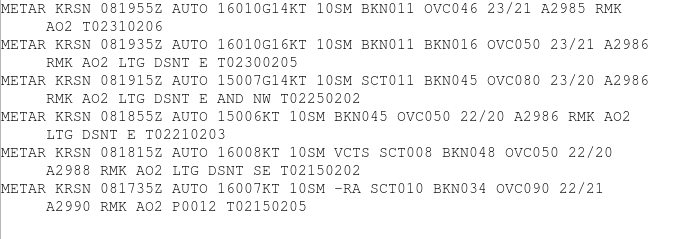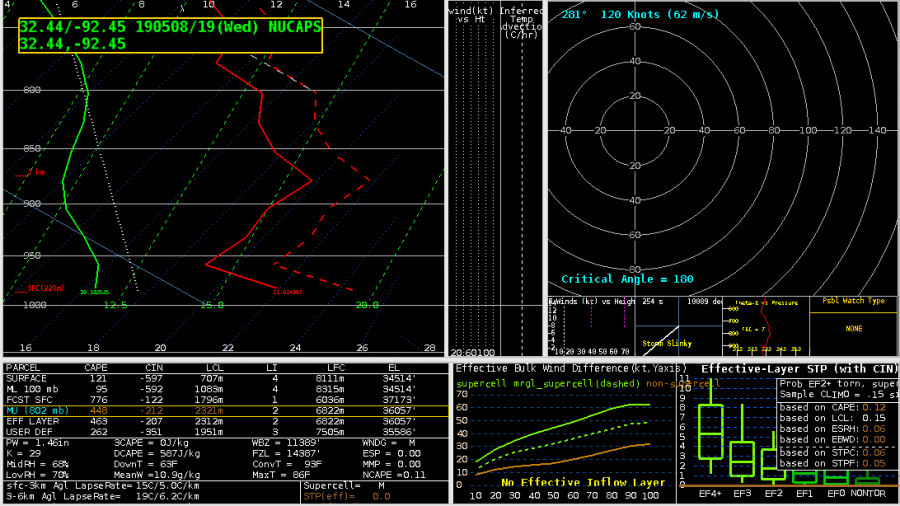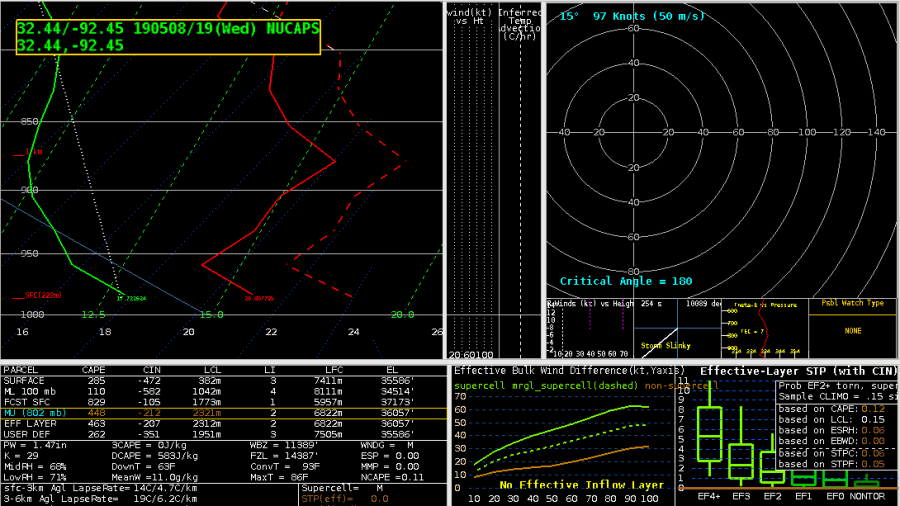In trying to give due diligence to all of the products I decided to look at the NUCAPS soundings a little deeper today. The location of the sounding point was around 9 mi SE of Ruston Regional Airport in an area that was impacted by a weak line of convection moving across central Louisiana, as shown in the METARS from KRSN.

Both soundings passed the QC checks and were towards the center of the swath. So what did NUCAPS show? Here are the lowest levels of both the NUCAPS and Modified NUCAPS soundings at 19Z…


The NUCAPS sounding had a temp of 21.92C (71.47F) and a dew point of 16.18C (61.12F). The modified NUCAPS sounding had a temp of 20.81C (69.46F) and a dew point 17.72 C(63.87F).
For comparison here are the RTMA temp and dew point between 17-19Z at the sounding point and at KRSN…
T/Td @ NUCAPS T/Td @ KRSN
17Z 72.65F 72.76F
18Z 73.68F/69.49F 74.08F/69.39F
19Z 71.47F/69.93F 73.10F/70.40F
It makes sense that the RTMA dew point depression is small given the recent rains, and if the RTMA is suppose to be the ground truth, it looks like the NUCAPS soundings did a bad job in this case. Temps for the NUCAPS soundings were 2-4 degrees cooler which is okay, but the modified sounding was cooler. It would have probably been better to keep the temp from the unmodified sounding. With regards to dew points, both the modified and unmodified soundings had lower dew points than RTMA, on the order of 6-7 degrees. These definitely affected the thermodynamic calculations, though I’m pretty positive that it was the mid-level inversion that did the most damage. I’m not sure how to fix this since only the surface points get modified.
Anyways, hindsight being 20/20, I probably should have looked at an area that wasn’t recently impacted by rain, but by the time I realized it it was too late and I already gathered all the data. Anyways, both NUCAPS soundings in this case did not accurately represent the environment in the lower levels, likely a result of evaportaive cooling and outflow behind the line of convection. This is a word of caution that despite the soundings passing the QC checks (the points were both green) and being in the center of the swath the data may not be the most useful.
